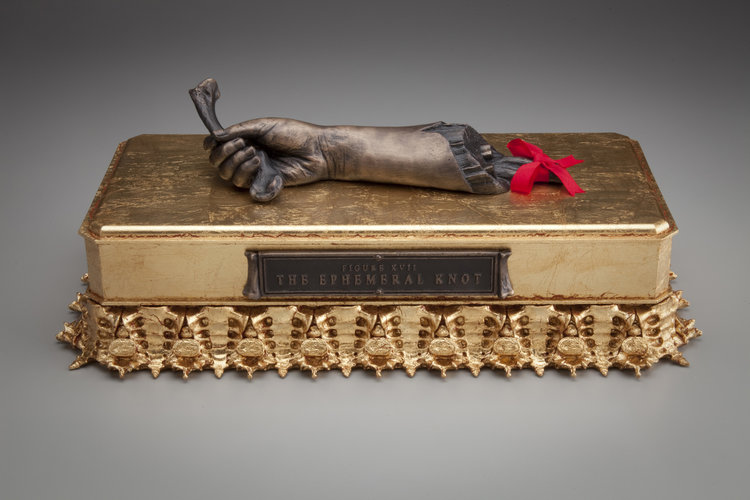
I was immediately drawn to The Ephemeral Knot by the staggering craftsmanship, and attention to detail, but the subject matter is what holds you fast. Paul Nitsche’s work always pushes you with a somber confrontation. In this case, that there is no promise of life, or of moving unscathed from birth to adulthood. With the advent of modern medicine, most of my generation/region/social class isn’t acquainted with these facts. Families had almost four children on average in 1940, down to two and a half in 2002. In the United States child mortality fallen dramatically, cut by half just since 1980. In my 13 years of education in one school district, there was little mention of death. As with any similarly unique experience, this was the only one I knew. Even in moments where confrontation of death had become inevitable: the death of a friend’s parent, grandparent, or a student a year above me as the result of a rare illness, these subjects were discussed in hushed tones by us students amongst ourselves, with little to no direction from the adults, or authority figures. I think that sums up the handling in that environment pretty well. Rare, whispered, awkward, and tragic.
What Nitsche is doing with this piece is bringing this discussion to the forefront with honesty, respect, and beauty. It is symbology of frailty, disaster, and decay. The detail of his rendering leaves very little to the imagination in this respect. Here is what he has to say in that respect:

“Something akin to a Memento Mori, The Ephemeral Knot is a sculpture depicting the bridge between youth and death. The child's hand grasps a clavicle bone, the first bone to begin the process of ossification. The clavicle can be regarded as ancient in terms of the body, and here represents time's passing as well as the end of life. The red silk bow is tied around three extensor muscles: Extensor Digitorum, Extensor Digiti Minimi, and Extensor Carpi Ulnaris. These muscles, in general, function to extend the fingers and wrist. Their role here is to illustrate release, a letting go of life. The knot, or bow within this piece, represents life. The loosening of a knot could be seen as the unraveling of existence. Interestingly, the silk bow will be the first component of this piece to decay, as the rest of the materials are far more time stable. Lastly, the snail, with its coiled shell, is another reference to journey and purity.”
It’s hard to get more specific than that, but in this case I think it makes sense to treat the piece with extreme specificity. It’s far more important to have clarity when the stakes are this high. Even still, I don’t think anyone will consider his body of work in a mile of “safe.”
-
Aedric Donovan
Gallery Associate
